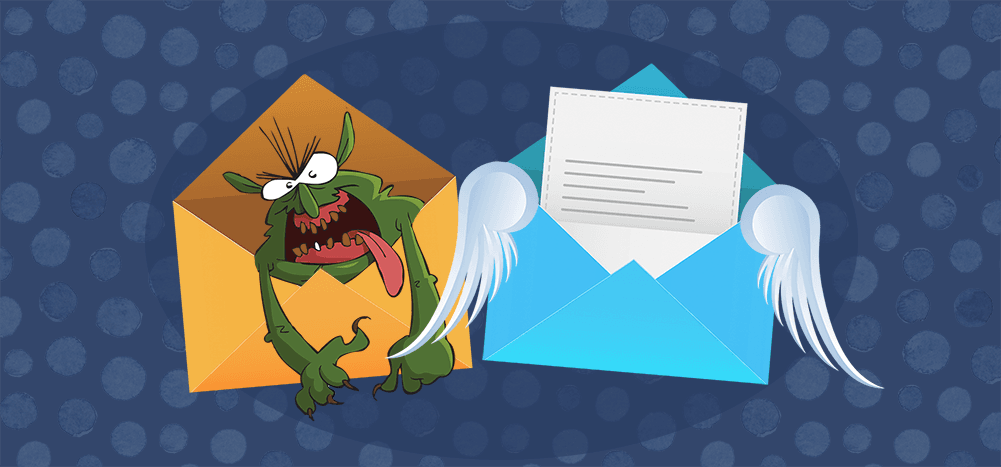
Cold email vs spam is a worthwhile debate, though there’s a definitive answer.
No, cold email is not spam.
But if you have the wrong approach to cold email, some recipients (not to mention spam fighting organizations and/or governments) might think it’s spam.
And let’s face it: nobody likes spam emails. While you probably aren’t sending email spam intentionally, an innocent mistake could land your cold email in your recipient’s spam folder.
Fortunately, once you’re clear about cold email vs spam differences, you’ll be able to improve your outreach efforts with ease.
In this article, I’ll cover the key differences between cold email and spam and clarify if cold emailing is actually legal. I’ll also give you six actionable cold emailing tips to help you avoid being marked as spam.
Cold Email vs Spam: Table of Contents
(Click on the links below to jump to specific sections.)
- Cold Email vs Spam: 5 Key Differences
- Is Cold Emailing Legal?
- 6 Handy Cold Emailing Tips To Avoid Being Marked as Spam
Let’s dive in.
Cold Email vs Spam: 5 Key Differences
Although people sometimes confuse the two, cold email is not the same as spam.
Here are the five key differences between them:
1. What spam is versus what cold email is
While both are sent to recipients with whom you don’t have a pre-existing relationship, cold emails and spam refer to two different things.
Here’s what cold emails and spam emails are:
Cold emails
A cold email is an outreach message you send to someone with whom you haven’t previously interacted. When comparing a cold email versus a cold call, a cold email is similar to cold calling for B2B sales — you contact prospects to determine if they’re interested in your product or service, but you do so over email.
However, cold emails are much less intrusive and bothersome than cold calls. As a result, your prospects are more likely to be receptive to your offering if you send them a cold email.
Generally, a sales rep will send cold emails to qualified cold leads that fit their ideal customer profile. In other words, they’ve researched whether the recipient is a good fit for their offering.
Also, they’ll usually validate the recipient’s email address before sending them a cold email to ensure it’s going to the right person. (Quick plug: GMass offers a free email validation tool which you can use when you’re sending campaigns — or use anytime on the web, even if you’re not a GMass customer.)
Here’s what a cold email looks like:

Interested in learning more about cold emailing?
Check out my ultimate guide to cold email for some useful pointers.
Spam emails
Spam emails are unsolicited emails to people who most often don’t want to receive them. Common examples of spam emails include sales pitches for sketchy products, unwanted newsletters, chain forwards, hoax emails, phishing scams, and more.
Usually, the recipients of spam sales emails aren’t qualified leads and don’t necessarily fit the target audience. And the senders often disguise who the emails are from in an attempt to deceive recipients.
These incoming emails are usually promotional messages that advertisers use to promote offerings to people, regardless of whether or not the product would benefit them.
As a result, unlike cold emails, these unsolicited emails are sent to countless email addresses at once. The sender usually does this without researching the target audience or confirming that the email address exists.
Not surprisingly, this type of commercial electronic message usually has a negligible reply rate. (That’s a big part of the cold email vs spam difference: Cold emails may not have massive reply rates, but they should definitely do better than spam.)
Here’s what a spam email generally looks like:
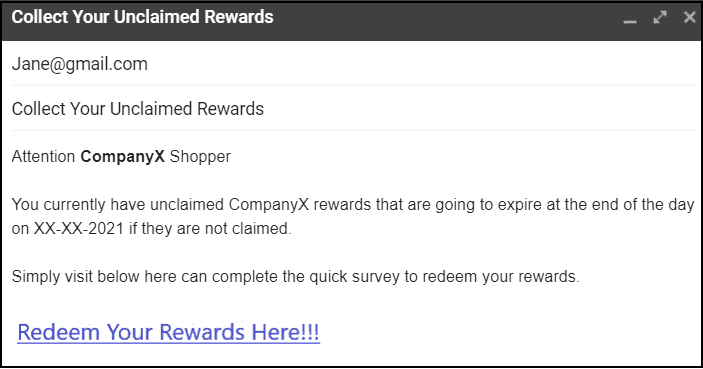
Want to find out more about spam emails?
Discover what spam emails are and five ways to stop them.
2. Intentional contact and personalization
Another key difference between cold emails and spam is intentionality.
A cold email makes intentional contact with prospects for a valid business reason. The best cold emails include a thoughtful, targeted email message with a specific value proposition for the right person.
In other words, the sender sends personalized emails to suit various recipients and their individual needs.
On the other hand, a spam email doesn’t include personalized information that’s addressing the recipient’s specific needs. While a cold email aims to start a conversation, there’ll usually be no conversation with a spam email — just a generic advertisement.
3. Buyer-centric vs product-centric
Cold emails typically contain relevant messages that focus on the potential buyer and the value the offering can provide the prospect.
In contrast, spam emails focus on promoting the product rather than focusing on the recipient.
While cold emails involve researching the potential customer and matching the product offering to the recipient, spam emails are usually just one generic mass email sent to hundreds or thousands of people without any tweaks.
4. Honesty about their purpose
Another critical difference between cold emails and spam is the straightforwardness about their purpose.
Cold emails are always honest about their intent. The subject lines of cold sales emails usually indicate their purpose and don’t leave the recipient guessing what the message is about.
Moreover, cold emails aim to build trust with a potential client to start a conversation about how the sender can help with the prospect’s unique pain points.
After all, legitimate businesses don’t need to be secretive or hide behind a false subject line. They’ll be direct and transparent about the purpose of the email and details like contact numbers and addresses.
In contrast, spam emails mostly use ambiguous subject lines and sometimes even deceptive or clickbait subject line ploys unrelated to the actual message. Their aim is just to get the recipient to open the email.
That’s why almost all spam emails often mask themselves as a promotion or “ultimate solution” to some problem.
They usually contain misleading subject lines, gimmicks, flashy words, suspicious links, and other spam triggers. They never tell you how they got your email address or why they chose to email you specifically.
5. How the sender obtains recipient email addresses
Another key difference between spam emails and legitimate cold emails is how the sender obtains recipient contact information like their email address.
Recipient addresses for cold emails are usually obtained by searching online for prospects who would benefit from the sender’s offering.
You can browse through LinkedIn, Twitter, and other social media platforms or even use email-finding tools like Voila Norbert or Clearbit Connect to find a prospect’s email address.
Once you’ve compiled the list of emails, you can further refine your mailing list and reduce your bounce rate by using email verification tools like Bounceless, Zero Bounce — or better yet, GMass’s free email verification tool. This will ensure the addresses on the list are functional and valid.
On the other hand, spammers usually purchase mail lists or use bots that crawl the internet and compile lists of random email addresses. Then, they send emails to every address on their list, whether these addresses are functional or not, resulting in a high bounce rate.
Now that I’ve explained how different cold emailing is from spamming let’s discuss whether it’s actually legal or not.
Is Cold Emailing Legal? (Plus How Different Entities Define Spam Versus Cold Email)
Yes, cold email is generally nice and legal.
However, each country has different regulations about the legality of cold emails, and you should research which laws apply to your commercial electronic message.
For example, in the U.S. you’re allowed to send commercial emails to people you have no relationship with as long as these emails adhere to specific CAN-SPAM Act requirements.
Here are the definitions of spam according to the U.S. and E.U., as well as according to some of the organizations fighting spam — so you can see just how cold email and spam differ.
Note: While we’re experts in email, we are not lawyers and the below is not intended as legal advice. Make sure to consult with your legal professionals surrounding any gray area with cold email.
CAN-SPAM Act: Cold email vs. spam
The CAN-SPAM Act is the U.S. law which outlines the requirements for commercial messaging.
The CAN-SPAM Act puts restrictions on “commercial electronic mail messages,” which it defines as a message where, “the primary purpose … is the commercial advertisement or promotion of a commercial product or service (including content on an internet website operated for a commercial purpose.”
However, it gives quite a bit of leeway for “transactional” or “relationship” messages. And the Federal Trade Commission has clarified CAN-SPAM “doesn’t require initiators of commercial email to get recipients’ consent before sending … there is no opt-in requirement.”
CAN-SPAM classifies a commercial message as spam if it uses “header information that is materially false or materially misleading” — meaning a false or misleading “from” line, email address or domain name, or IP address.
It also classifies a message as spam if it uses a misleading subject line, does not have “clear and conspicuous identification that the message is an advertisement or solicitation,” does not have a valid “physical postal address of the sender,” and does not include the ability to opt-out.
So as long as you’re straightforward with your subject lines, who you are, and what you’re selling — and as long as you give recipients a chance to opt out and honor their opt-out requests — your cold emails should not hit the CAN-SPAM definition of spam.
As for non-commercial messages — CAN-SPAM isn’t interested in those. Non-commercial bulk email is not defined as spam under CAN-SPAM, so if you’re sending mass emails that aren’t at all commercial, technically you don’t even have to include an unsubscribe link. (This is true for political campaign emails as well, even though those are asking for money.)
GDPR: Cold email vs. spam
GDPR, which is the E.U.’s set of laws around data privacy (including emails), is generally stricter than the U.S. CAN-SPAM Act. However, it does carve out room for cold email.
While GDPR does not set a specific definition of spam, it states that “processing” (the use of a person’s data, including their email address) is only legal when that person “has given consent to the processing of his or her personal data for one or more purposes” and/or, among other things, “processing is necessary for the purposes of the legitimate interests pursued by the [sender].”
It later goes on to further discuss what constitutes “legitimate interest” — and according to a leading privacy consulting firm in the E.U., distinguishes that, “if a company has a justified interest in ‘cold’ calling through email marketing, the marketing emails may be sent to potential customers without consent.”
But, as soon as a customer opts-out, the company needs to stop emailing them immediately to avoid violating GDPR. (Check out our article on GDPR for more on how to stay compliant with GDPR for cold email.)
Spamhaus: Cold email vs. spam
The Spamhaus Project is a nonprofit that tracks spammers around the world; it maintains several lists of spammers (domains, IPs, and more) which email service providers use to block spam from reaching their users.
Spamhaus defines spam as “unsolicited bulk email.” Unsolicited meaning a person “has not granted verifiable permission for the message to be sent”; bulk meaning “the message is sent as part of a larger collection of messages, all having substantively identical content.”
And an email has to be both unsolicited and bulk to be spam. That means sending a one-on-one email unsolicited, like a single cold email, would not fall under its definition. Nor would bulk emails where subscribers have opted in, like a newsletter.
Spamhaus does not make a commercial/non-commercial exception; even non-commercial unsolicited bulk emails fall under their definition of spam.
So how do you carve out an exception for your cold emails? Through how you gather your email addresses and through personalization of your messages.
If you’re highly customizing your cold emails to your recipients — speaking to their specific problems and your solution to those problems — it’s fair to say your messages no longer have “substantively identical content.” Check out GMass’s feature to personalize entire paragraphs — that’s a great step toward making sure your emails are substantively different.
Abuse.net: Cold email vs. spam
Abuse.net is a database of domains that are known for (or accused of) sending spam, as well as a resource center for finding ways to report spam.
While it doesn’t have its own original definition of spam, it does say: “Most abusive mail has forged return address information, so the To: ,From:, and Reply-To: addresses are not the actual source of the message.”
In other words: Spam emails are intended to deceive. And cold emails are different; they aren’t based around deception. You’ll use your actual to:, from:, and reply-to: addresses. (Especially if you use a service like GMass, where you send cold emails from inside your Gmail account).
You’ll state clearly who you are, where you’re located, and what you’re offering. There’s no attempt to fool anyone — which differentiates cold email from spam according to Abuse.net.
SORBS: Cold email vs. spam
SORBS (Spam and Open Relay Blocking System), runs a DNS-based block list of servers that have a history of sending spam, phishing emails, and other malicious emails.
They define the following four types of email as spam: unsolicited commercial email, unsolicited bulk email, unsolicited religious email, and unsolicited political email. They also say solicited email is not spam.
As for cold email, they offer a litmus test on whether or not an unsolicited message is spam: “A good test as to whether any particular message you might send will be considered to be spam is to ask the question, ‘Is the sender going to benefit more than the receiver of the message?’ … Tip: An offer of a discounted item is going to benefit the sender more than the recipient.”
What does that mean for cold email? Under the SORBS definition, it should be clear just how wildly beneficial your offering is to your recipient. That would most likely include a personalized email speaking to their needs and an unambiguous and targeted demonstration of how your offering is legitimately valuable to the recipient.
URIBL and SURBL: Cold email vs. spam
Neither URIBL nor SURBL set a specific definition for spam; instead, they gauge what emails are and are not spam based on the links in those emails. URIBL maintains a list of “domains that appear in spam” based on third-party reports and testing; SURBL says its lists are “websites that have appeared in unsolicited messages.”
In other words, they’re only concerned with the links within a spam message, not the domain name, IP address, or anything else on the sending side. The implication there: If you have spammy links, you’re sending spam; if you don’t, you’re not.
As a cold emailer, that should be one of your biggest reason to take a few minutes to set up a custom tracking domain.
When you track clicks in an email, every link goes through a tracking domain — so that tracking domain will appear in your email. If you’re using your email platform’s default tracking domain, you’re sharing it with other emailers… some of them might send emails that are classified as spam… and that could mean you emails wind up on a block list due to association.
While GMass, like every other high-quality email platform, is always working hard to keep spammers away and keep clean tracking domains, someone can slip through the cracks from time to time. With a custom tracking domain, you won’t have to worry about that.
Now that you’re very well-versed in how different entities define spam versus cold email, let’s talk strategies for making sure your cold emails aren’t incorrectly or unfairly classified as spam.
6 Handy Cold Emailing Tips To Avoid Being Marked as Spam
If you don’t perform cold emailing correctly, your emails could land in your recipient’s spam folder.
Here are seven practical tips to help you avoid this:
1. Don’t use deceptive email subject lines
It can be tempting to add whatever subject line you think will hook your prospect when sending your cold emails, but this is actually a terrible strategy.
Remember, the subject line of your cold email should accurately reflect what the email is about.
For example, avoid using a subject line like “free gift awaits you” if you aren’t actually offering a free gift. Most people won’t even bother opening incoming emails with these deceptive subject lines.
Additionally, phrases like “limited offer” or “urgent” are usually spam triggers, and spam filters could send your email directly to the spam folder.
Here are some great cold email subject lines:
- “Did you know [the recipient’s competitor] ranks higher than you for ‘[keyword]’? Here’s why.”
- “A new idea for reaching your target market”
- “Are you on track to hit your Q3 goals (I have some advice that may help)”
Wondering how to write a good cold email subject line?
Read my post on 43 cold email subject lines that get your emails opened instantly.
2. Remove inactive email addresses from your email list
For an effective email lead generation process, you must regularly update your email list. This includes removing all inactive email addresses.
Sending emails to inactive addresses results in hard bounces, which alert spam filters about the percentage of bounced emails you’ve sent. This could cause your future emails to be marked spam and go directly to the spam box, negatively affecting your sender reputation.
That’s why you should identify and remove disposable mail IDs, spam traps, and shared email addresses from your mailing list.
Fortunately, with a cold email tool like GMass, which includes a free email verification service, you can easily verify the addresses in your emailing list. When you use the email verification tool, only email addresses that pass the verification test will receive your cold email outreach campaign.
GMass also has automatic bounce management and unsubscribe management — which will automatically suppress future emails you send to hard bounce addresses and people who’ve unsubscribed.
3. Allow recipients to opt-out
It’s essential to allow recipients to easily opt-out of your email list if they aren’t interested in what you have to say or just don’t want to receive commercial emails.
Otherwise, you run the risk of receiving spam complaints in addition to compliance issues.
Most companies usually include a single line underneath their email text with an unsubscribe link or opt-out option instructions. You could also have a line telling recipients to reply to your email and ask to be removed from your mailing list instead.
4. Ensure your email address is authenticated
To ensure your emails aren’t marked as spam, you need to ensure that your email address is authenticated and verified with SPF, DKIM, and DMARC records.
Here’s what each of these records is:
- SPF (Sender Policy Framework): identifies whether the sender used an authorized mail server to send the email.
- DKIM (DomainKeys Identified Mail): applies an encrypted email signature to verify whether emails are authentic.
- DMARC (Domain-based Message Authentication, Reporting & Conformance): helps the sender validate email protection with SPF and DKIM authentications.
Without these protocols in place, the recipient’s spam filter will find it difficult to verify your email, and it could be flagged as spam.
You can use GMass’s free Email Analyzer tool to test your SPF, DKIM, and DMARC records and more to see where you currently stand.
5. Test your emails to see what might make them go to spam
It’d be great to know in advance if an email you’re about to send is destined for the inbox or the spam folder.
Fortunately, there’s an easy way to find that out — and to test what tweaks might improve your inbox deliverability.
We’ve built the Spam Solver here at GMass — a one-of-a-kind tool that tests out your campaign to determine whether or not it’s likely to wind up as spam. With the Spam Solver, GMass will send your email to 20 mailboxes we’ve configured with different settings — then report back how often you wind up in the inbox, spam folder, or Gmail promotional folder.
From there, you can adjust settings in the Spam Solver to see if they make a difference on your deliverability.
6. Use email outreach tools
Even if a salesperson does everything right, there’s still the possibility of their emails being marked as spam.
That’s why my last piece of advice is to leverage email outreach tools to streamline your cold emailing efforts.
And the best tool for sending a successful email campaign is GMass.
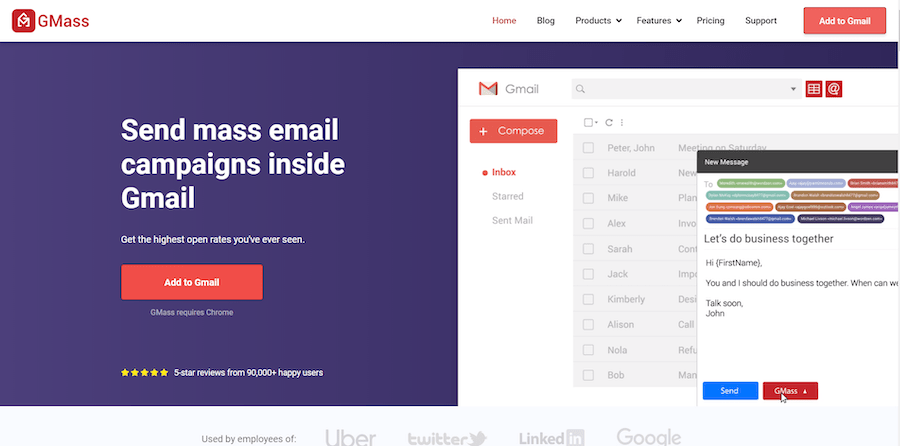
GMass is a powerful cold email marketing tool that works right inside Gmail.
Due to its advanced outreach capabilities and ease of use, it’s favored by employees of large companies like Google and social media titans like LinkedIn and Twitter. But GMass is also suitable for small businesses, solopreneurs, and startups.
With GMass, you can:
- Send automatically personalized emails and send mail merges with Google Sheets.
- Automatically build email lists.
- Schedule your emails.
- Create automated follow-up emails.
- Generate detailed cold outreach campaign reports and analytics.
- Send emails in bulk via SMTP to bypass Gmail’s sending limits.
- Only send cold emails to valid email addresses using the free email verification tool.
Additionally, here’s how GMass can help your cold emails avoid the spam folder:
A. The Email Delivery Wizard
The email deliverability wizard offers data-driven solutions to improve your sender reputation.
For example, the tool can help you answer questions like:
- How does verification affect email deliverability?
- What SMTP services can help you bypass Google’s sending limits?
- Can delaying your emails increase your open rate?
GMass’s email deliverability wizard helps you answer these questions so you can create effective campaigns with ease.
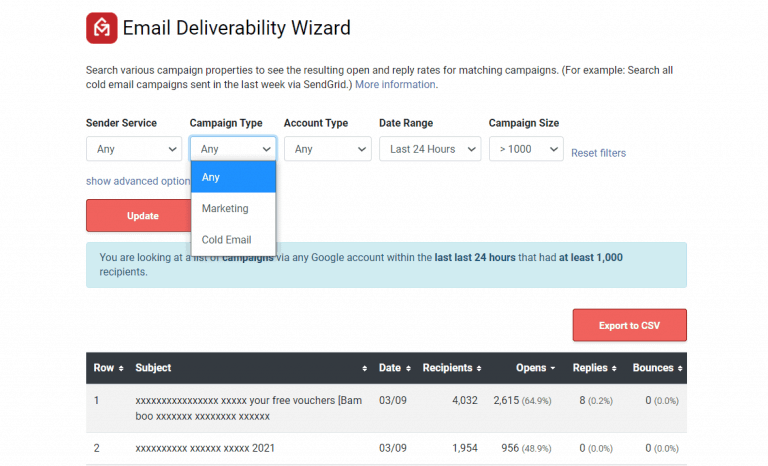
B. Improve Email Deliverability with Custom Tracking Domain
With GMass, you can set up a custom tracking domain to send cold emails to prospects, safeguarding your mail from the dreaded spam filter.
Why is this important?
Some spam filters catalog domains commonly found in spam messages, so if your emails contain the same tracking domain as a spammer’s emails, your emails can also get blocked.
GMass lets you replace the default domains and use a branded tracking domain name, like, link.XCompany.com. This feature works whether you’re using a Google Workspace or a Gmail account.
Using a custom domain can improve your domain reputation and email deliverability. It can also help your email avoid the recipient’s spam box as you aren’t using a shared domain.
For more information, check out my post on how you can set up your dedicated tracking domain with GMass.
C. Automatic Email Personalization
Remember, the best cold emails are buyer-centric and aim to provide value to the potential customer. They don’t just include a generic, impersonal script.
Fortunately, with GMass, you can automatically personalize your emails in bulk on a recipient-by-recipient basis. You can personalize various parts of your email like:
- Paragraphs
- Links and URLs
- Images
- Attachments
- The “To” Header
- And more.
This way, your emails are more likely to land in your recipient’s inbox, boosting your open and reply rate.
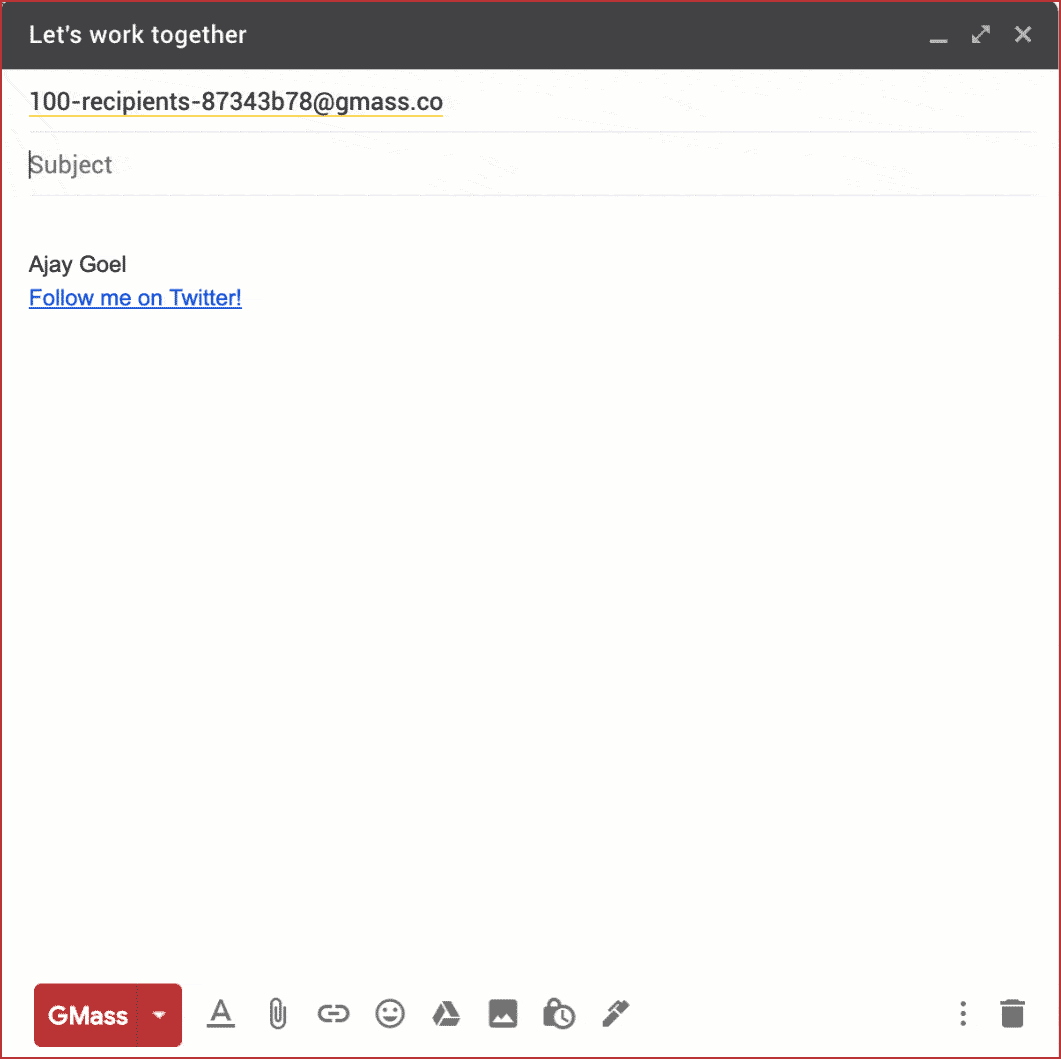
To get started with GMass, simply download the Chrome extension and sign up with your Gmail account. Additionally, Android users can also download the Gmail add-on to stay productive on the go.
Cold Email vs Spam: Final Thoughts
When it comes to cold email vs spam, the main difference is that cold emails aim to provide value to the potential client while spam emails don’t.
And while most types of spamming are dishonest and illegal, cold emailing is perfectly legal when done correctly.
Use the tips I covered here to ensure your cold emails don’t land in your recipients’ spam folders. Additionally, with a cold email tool like GMass in hand, you can use the world’s most trusted Gmail IP address to send personalized cold emails!
GMass also offers custom tracking domains, an email delivery wizard, and an automated spam solver to streamline your cold emailing efforts.
Why not try out GMass today to send effective cold email campaigns with ease?
Email marketing, cold email, and mail merge all in one tool — that works inside Gmail
TRY GMASS FOR FREE
Download Chrome extension - 30 second install!
No credit card required

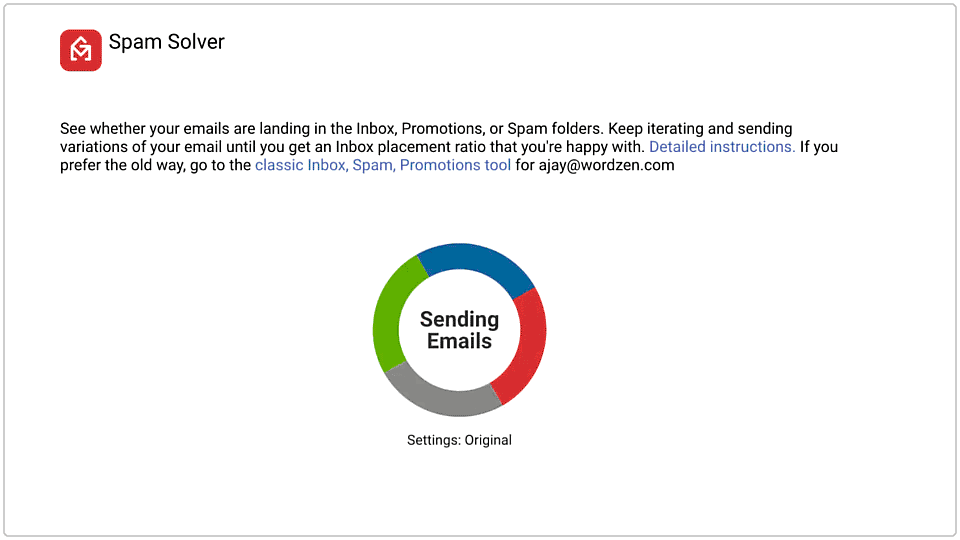

I have found that the tracking to check on whether the email is opened, does not work very well. It will show the odd one or two emails are opened but the majority are not. I have phoned various recipients to check if they have received the email and they have. This is very disappointing on a couple of levels. How can I be sure the email is opened? I only send about 200 emails.
I have been using the free version but did not get any better tracking when I purchased the paid version.
Can you explain why I am having this problem?
Regards,
David
Cold commercial email is just as unwanted by us who hate spam as the fraudulent kind is. You can try to polish it, but users still hate it. We’re going to report it just the same.